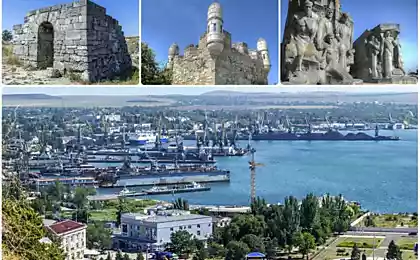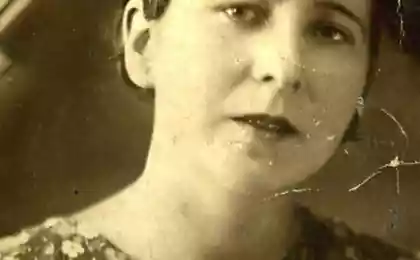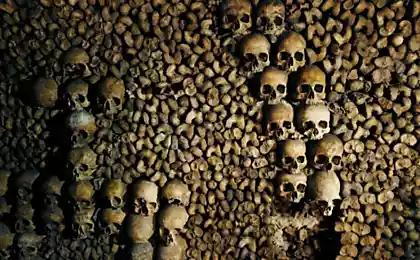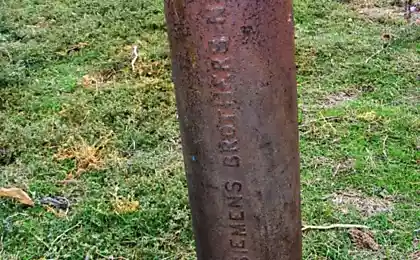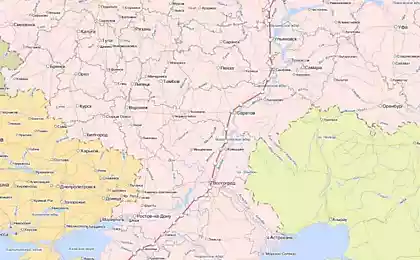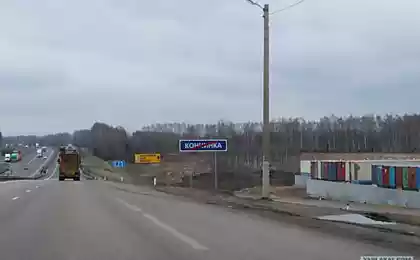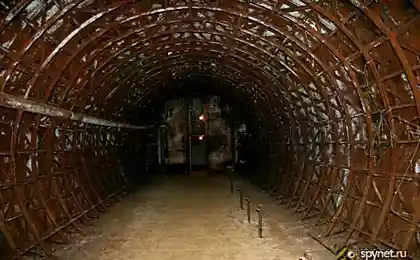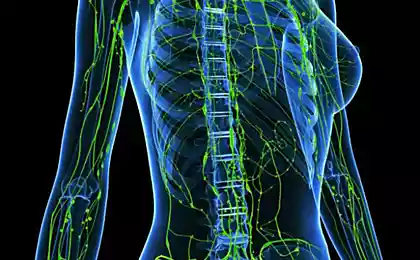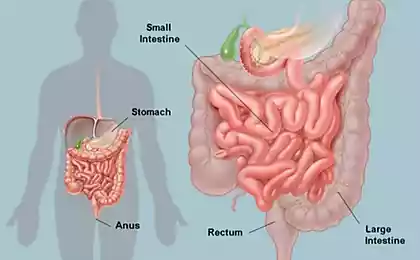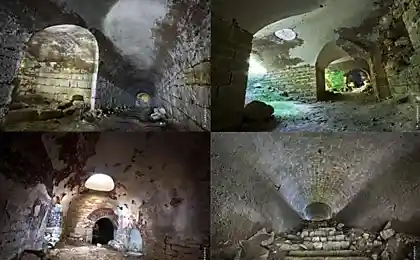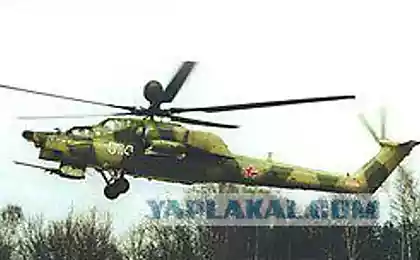905
The system of catacombs Kerch
The authorship of the article is owned by LJ SAMNAMOS'u
Under the ancient city of Kerch concealed dozens of huge in its extent podzemnh systems. Among them are the quarry, where for a long time was mostly rock mining for construction purposes, and during the BB serves as a refuge and command center for Crimean fronota. Catacombs are fraught with many unexplored passages. To this day, there is no precise accurate maps of all the workings and adits. The best known system in the area are Adzhimushkayskie quarry. For years, research expedition traveled here with a job search engine. The main difficulty in this case is very yalyaetsya Shatha state of the system, mnogogislennye collapse and debris, as well as the mining of a partial system. To this day, search teams found numerous shells, mines and grenades. Freestyle walking on drifts may be dangerous to the life ...
1. Login to the museum part. Famous Memorable - arhitektunaya compositions of the dead soldiers.
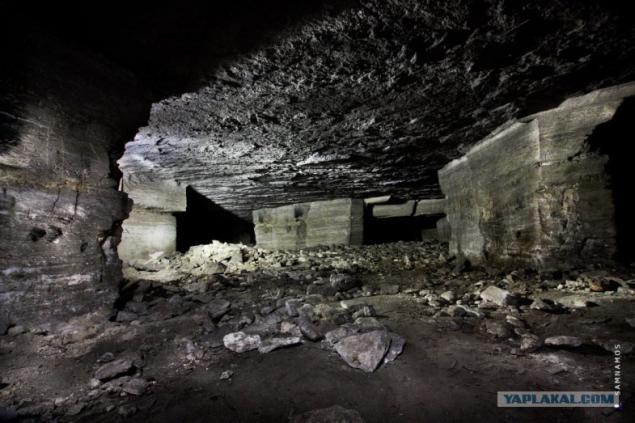
2. A small piece of the exhibition. In general, guided tour is a small segment of the roadway. We are not interested. We are in this review will focus on the informal side of the system. For information on the museum's part can be easily found on the Internet.
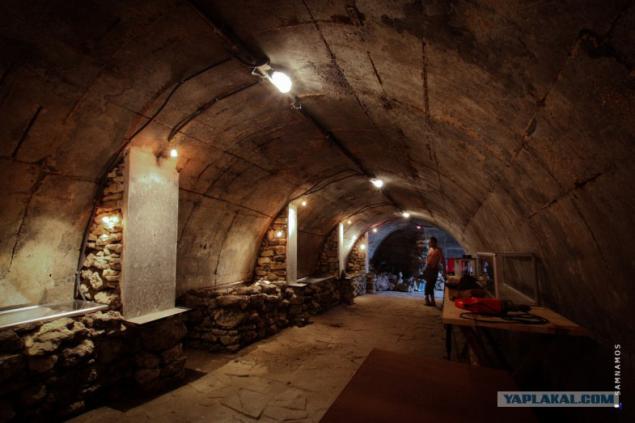
3. One of the many craters, formed as a result of aerial bombardment. Over the funnel visible unexploded aerial bomb.
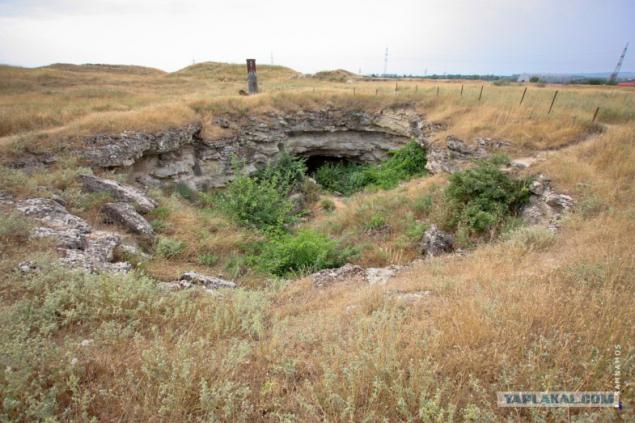
Nemngo history:
May 8, 1942 Nazi troops launched an offensive on the Kerch Peninsula and 16 May seized Kerch. The troops of the Crimean front, defending the city were forced to evacuate to the Taman Peninsula. But part of the troops (the remains of a marine brigade, border guard, Yaroslavl Aviation School, and others - a total of over 10 thousand people), to cover the retreat, and the crossing of the main forces, was cut off and took the defense Adzhimushkay quarries. There's also a part of the local population took refuge.
4. The main entrance to the quarry (on the part of the ravine). Even during production here was accomplished rock loading for transportation.
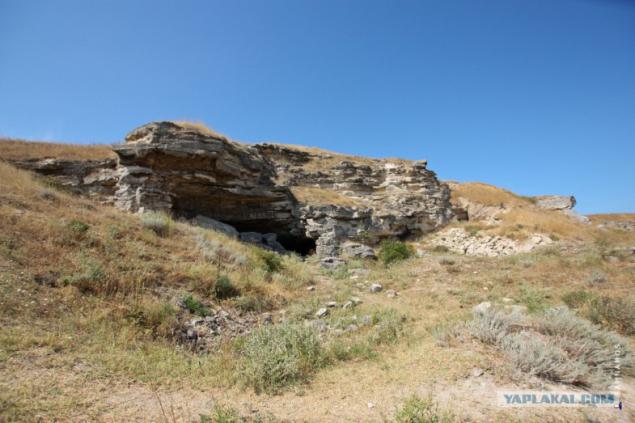
5. During the war in the roadway were perhaps the fiercest fighting. On the walls can be seen numerous signs to small arms.
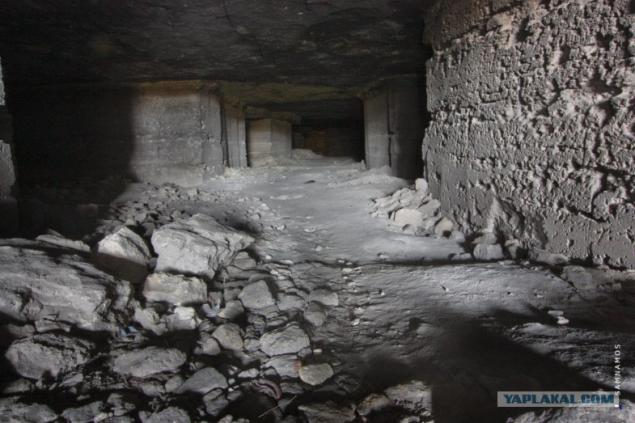
6. Fork. On the left the main entrance.

The central leadership of the quarries garrison headed garrison led by PM Yagunov MG and more important.
At first, the Germans could not understand where there are sudden attack of the Red Army. But soon the shelter was discovered, and there were moved additional forces of the Wehrmacht. By continuous attacks, German units of the Red Army was able to drop into the quarry, but further attempts to take quarry assault ended in failure: the detachment Yagunovo bravely repulsed all the attacks of the Germans. Even though the acute shortage of water, food, medicine, ammunition, besieged made daring forays, applied to the enemy strikes, destroying his posts and tanks.
7. The central part of the system is very large. The average ceiling height fluctuates about 3-5 meters.
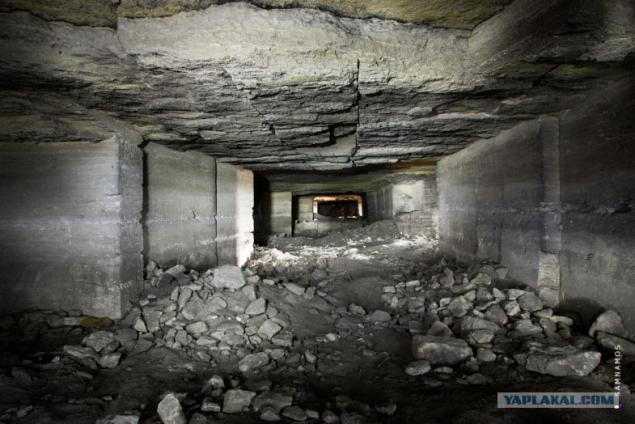
8. The system consists of several stages. Here, before the collapse, descending to a lower tier.
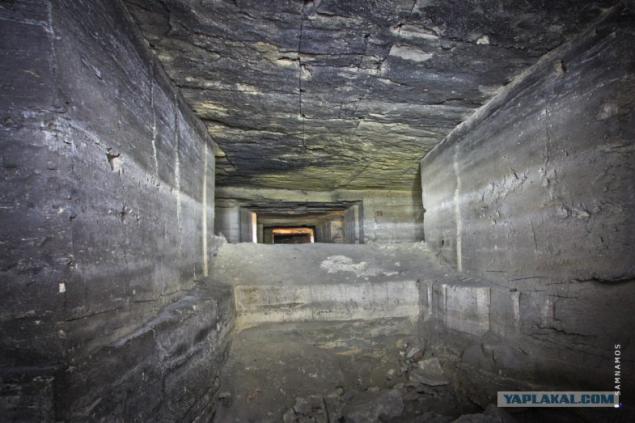
9. The former burial place P.M.Yagunova.
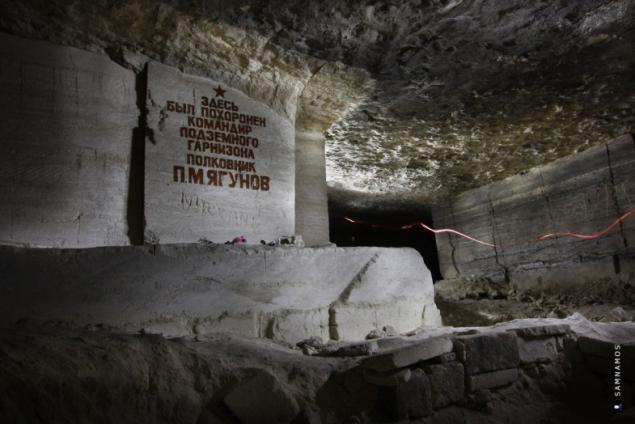
During one of the raids were captured German ammunition and weapons. During their inspection Yagunov died disarming unexploded grenade. He was the only party to the defense, which was buried in a coffin made of planks of the truck. In 1987, during the search operations tomb was discovered. The remains ceremonially reburied in the central square of the village Adzhimushkay.
10.
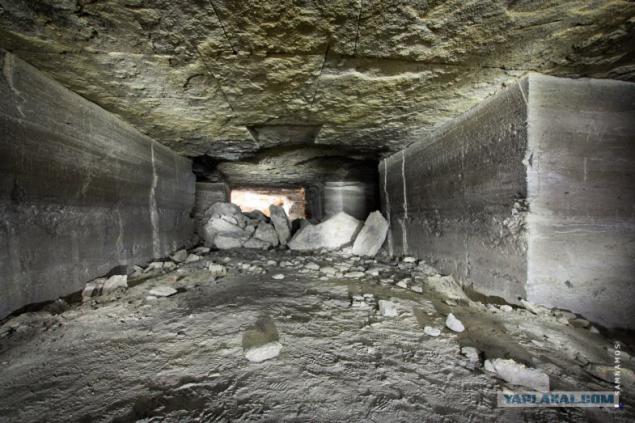
11. Here lies a surprising number zakoroneny. Under the layer of landslides still lie the remains of fighters. Somewhere here naholas large mass grave.
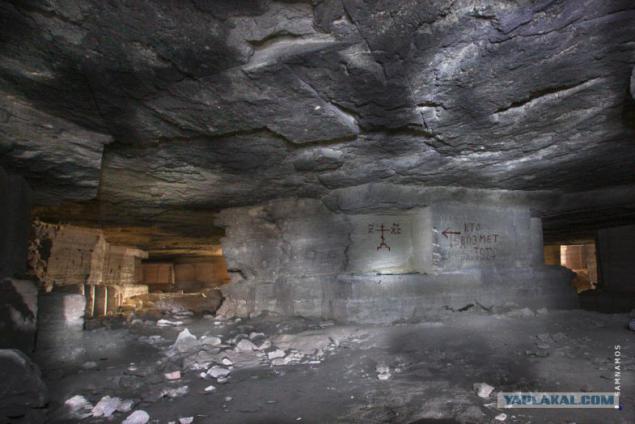
12.
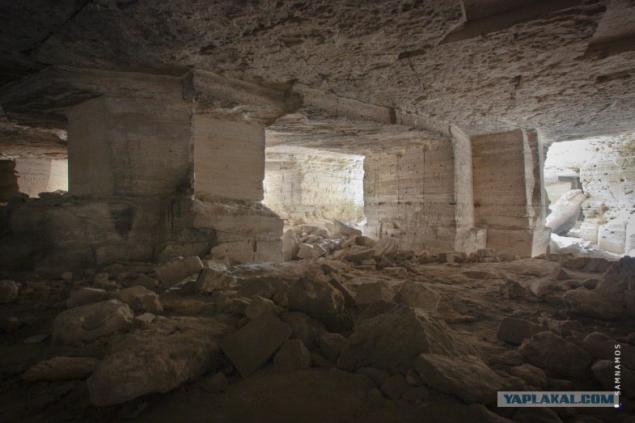
The catacombs were not prepared to withstand long siege: there were large stockpiles of food, medicine, weapons and ammunition and water. Each outing was accompanied by a fight. The village had two wells Adzhimushkay - "sweet" and "salty". The Germans, realizing in these sorties of the problems with the water eliminated in the area of the quarry pits and covered them. But the troops did not surrender. He was ordered to dig wells to one of the narrow gangway of rigor nastrogo classify information about his whereabouts. It was impossible to prevent the leakage of information.
13.
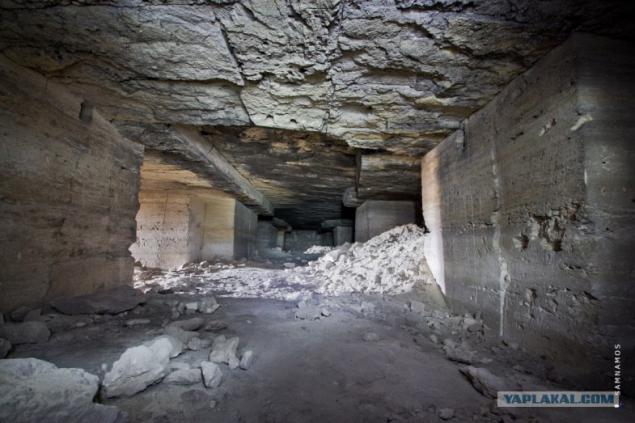
14.

15.
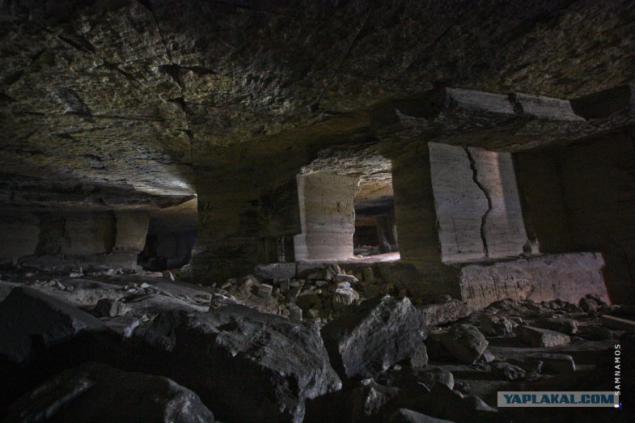
Later occupants learned about digging drift. The situation was critical. To get a little bit of water, soldiers licking moisture from the ceiling, and spat into the container ...
Sorely lacking weapons and food, and that Mizera water produced in this way, barely enough to sustain life. By this time the Germans began using poison gas.
16. On the left a huge crater is visible from the charge. The Germans had a rough idea of the location I strategic moves and trying to undermine them.
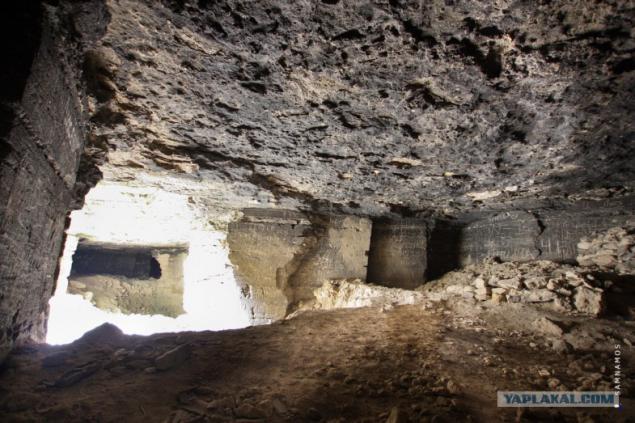
17.
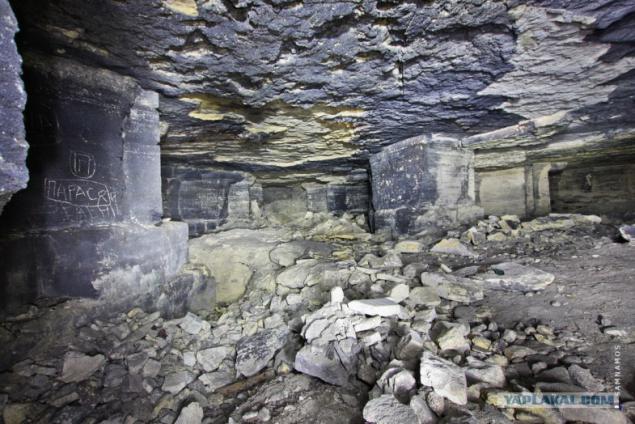
18. As in almost every major system on the walls indicated pickets (right) for oreintirovaniya.
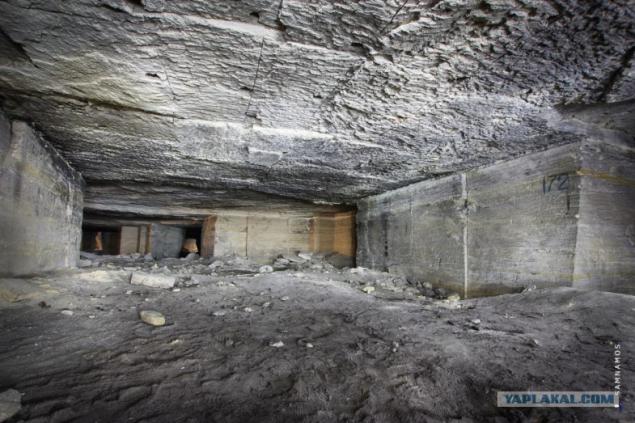
30 October 1942 42nd Germans surviving soldiers of the garrison were finally captured in a state of complete exhaustion. Of the approximately 13,000 people who descended into the catacombs after the 170-day siege survived only 48, who had been taken hostage. But the quarry and later became the base for the guerrillas of the local residents and prisoners of war.
19. During the whole system is present smell of decay and rot. Stumble here on the hill of bones is very simple.
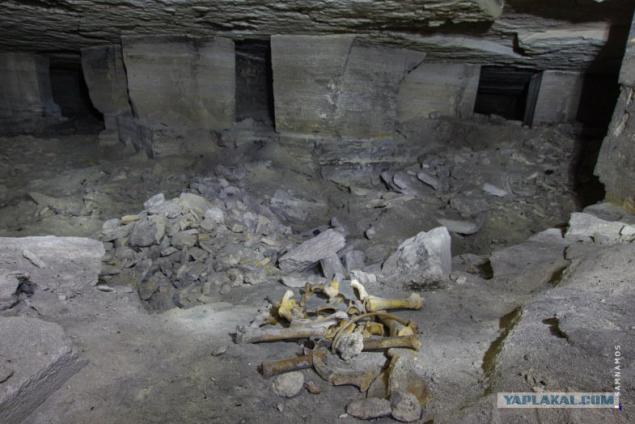
20.
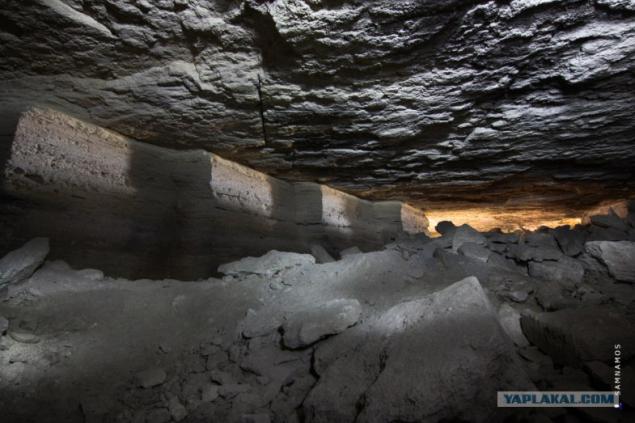
21.
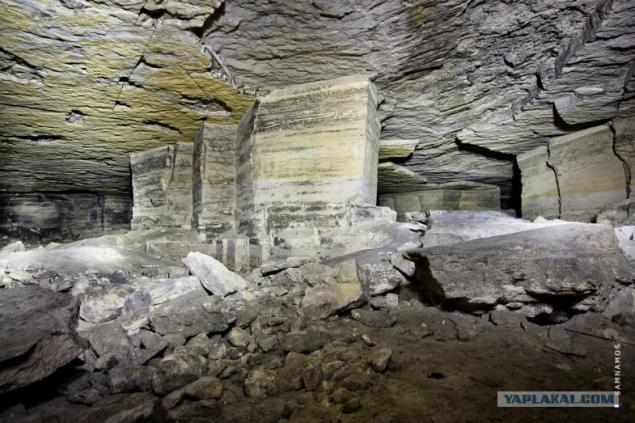
The heroic defense of Adzhimushkay quarries distract the considerable enemy forces. In November 1943, the area of quarries Adzhimushkay was liberated parts of the 56th Army
22.
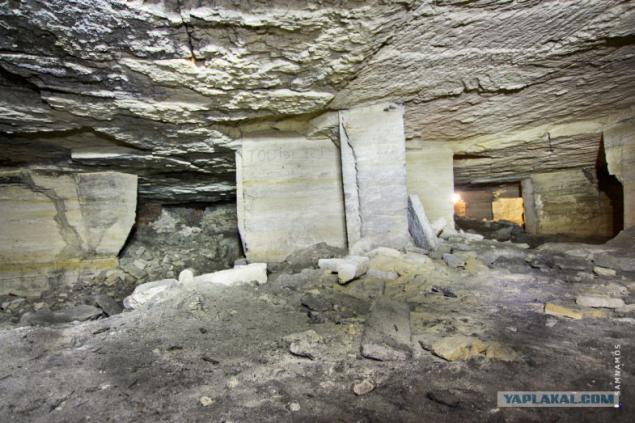
23. The remains of an unknown animal. It is believed that this cat
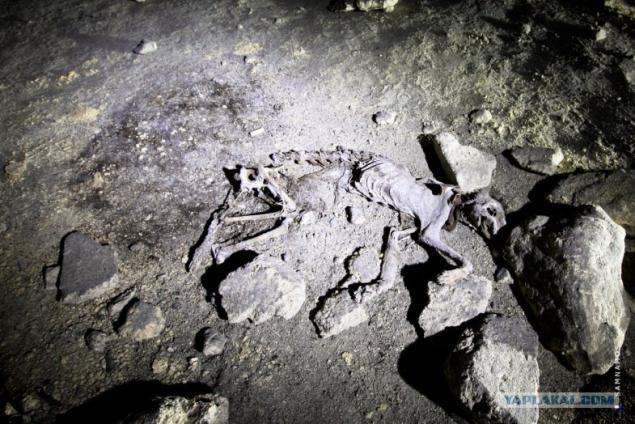
24.

For a long time no one dared to carry out research and study of the battle zone. The catacombs are visited mostly by local for profit. After many battles here left a lot of weapons and ammunition. Search works in the catacombs started provodditsya only 60th. It was set up a branch in the Kerch Historical Archives Museum, dedicated to the 25 th anniversary of the Defense Adzhimushkaya.
25.
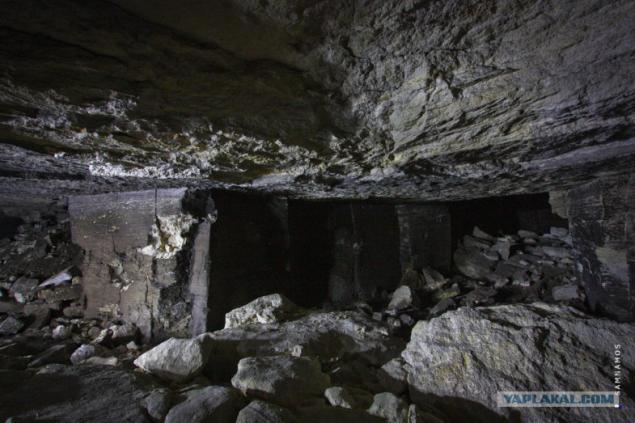
26.
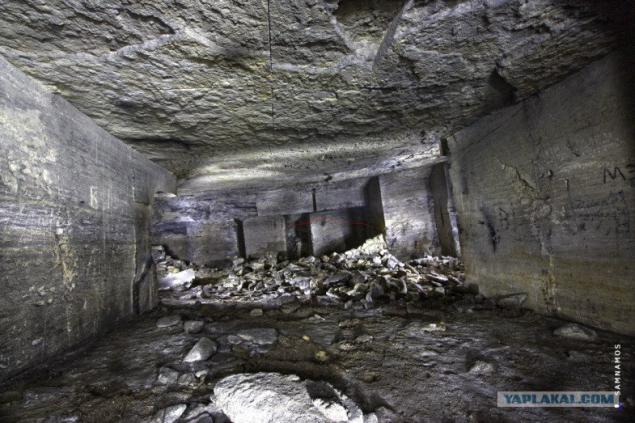
27.
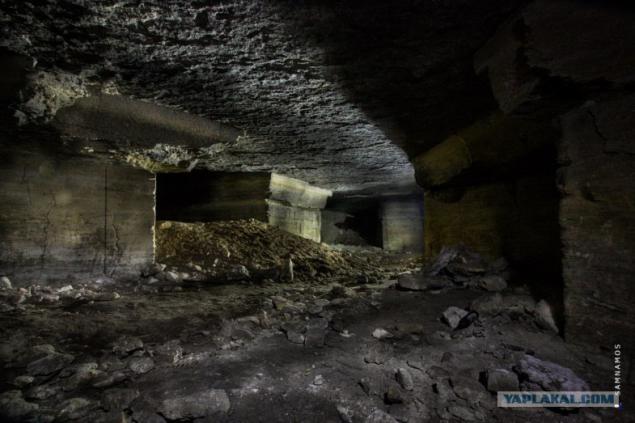
In 1972 in the catacombs starts the first complex expedition, consisting of the Crimean speleologists, sappers, signalmen and enthusiasts from Kerch). The purpose of the expedition - found staff documents troops, documents of the Party organization of the underground garrison. The expedition was "Speleological, the highest category of difficulty, work under ground 4-5th category (numerous landslides, debris), with explosive articles in a coal mine lighting ...". Among the finds were even 152- and 122-mm shells, mines, grenades and literally hundreds of unexploded 45mm shells. Results of the first expedition were very modest.
28.
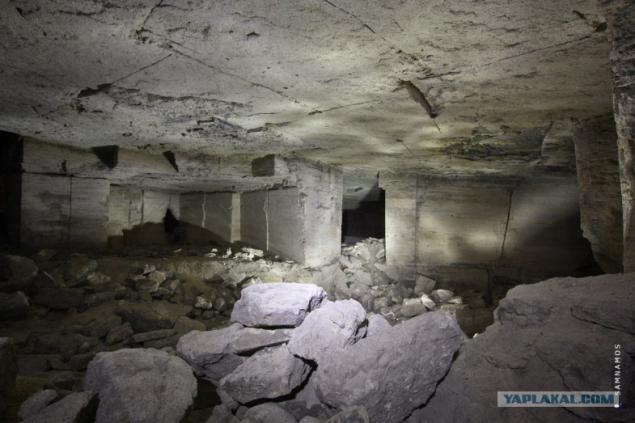
29.
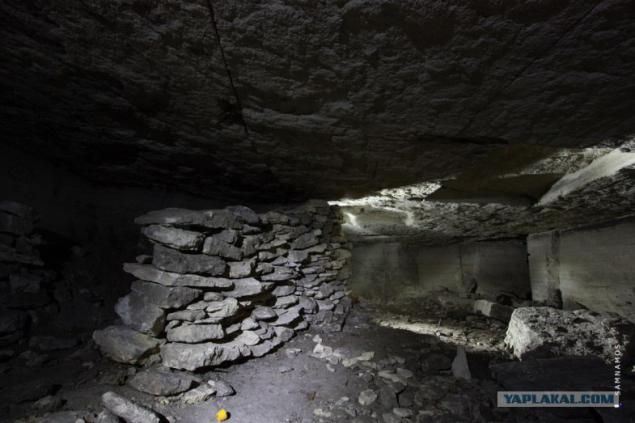
30
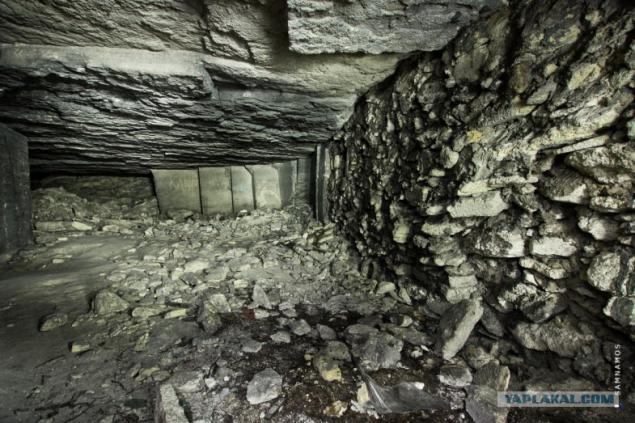
In the summer of 1973 he worked as the largest mission, including military historian V. Abramov. Most of the work carried out by SS veterans Defense Shaidurov of Ordzhonikidze and bakinets FF treasurer. With them it was precisely defined central tunnel Large quarries - the main landmark of all areas of defense. Treasurers have, where the main transceiver. Altogether the expedition - about 150 items found. But one of the most significant finds of the 2nd season were 2 polusgorevshie flue gas bombs and broke into fragments walled enclosure or chemical smoke grenades. Analysis of the substance of checkers was is hindered (last 30 years). But the expedition assumed (and with it, many experts agree) that the Nazis used suffocating OB, blowing them with smoke, which were made such flue gas bombs.
31. For the partition wall to the left is a museum route.
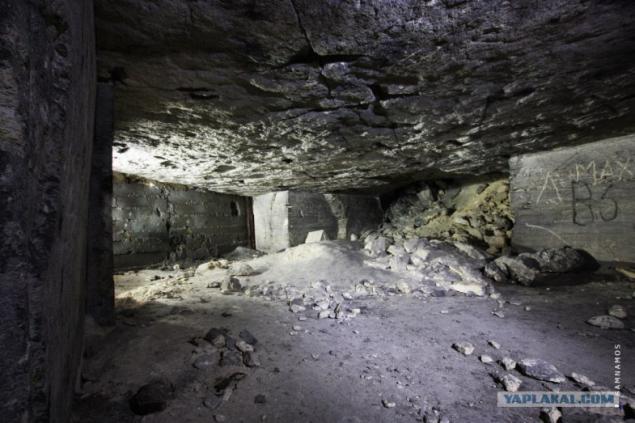
32. Due to the door that leads into the museum part is very cold air. I have long wondered why. A system of stable temperature of about 18 *, as in the museum at most 8 *. After careful examination of the walls was found vents for air conditioning that worked consistently. Apparently the organizers specially injected air. A curious point: On the surface, near the entrance to the museum even arrange for warm jackets.
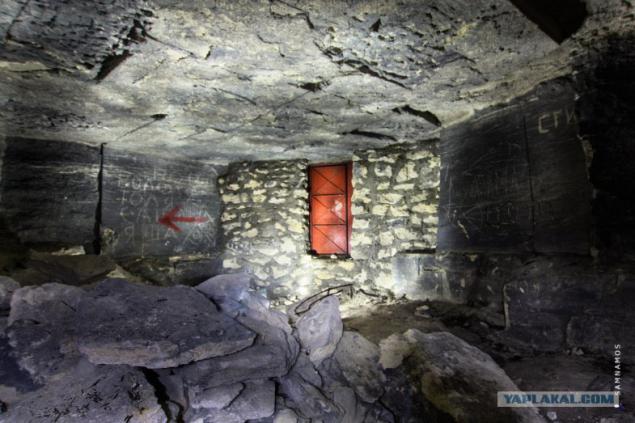
33
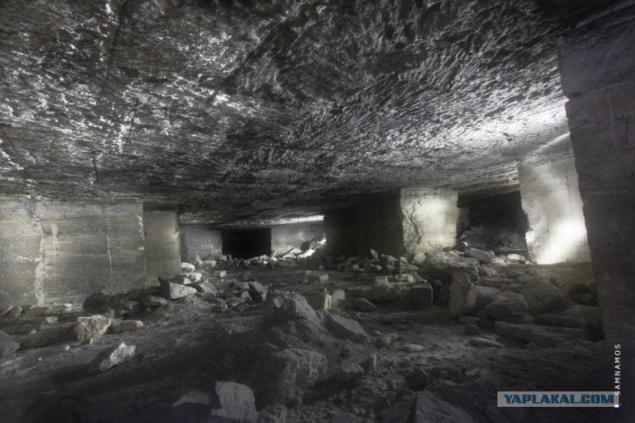
In 1974, the first detachment arrived Adzhimushkay Urals - the students of the Sverdlovsk Mining Institute, the head of which was the candidate of historical sciences MP Vahrushev.Nachinaya 1975 consolidated working team from the town of Chelyabinsk region (Miass, Zlatoust, Chebarkul), and a detachment from Lipetsk .Entuziasty of Miass squad (1975-1976 years) found two galleries (deadlock, cut deaf rubble), and the headquarters of the 1st Battalion. The main focus during the search was paid to the area of underground wells. He was the last place-based soldiers of the garrison. They could not be far from the water source. And conducted a search in the area of dislocation of the 3rd Battalion in the western part of the quarry.
34. "Abstract column».
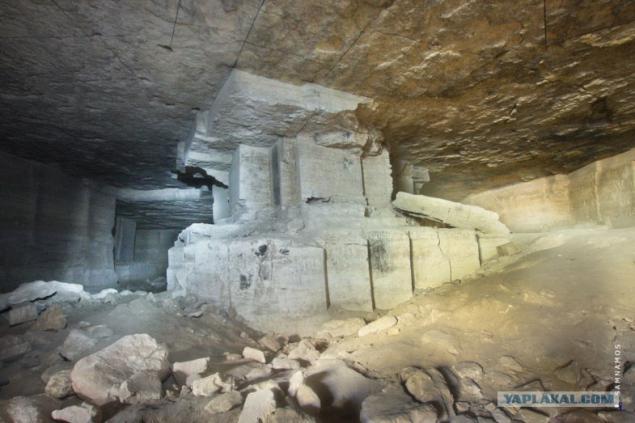
35.

36.
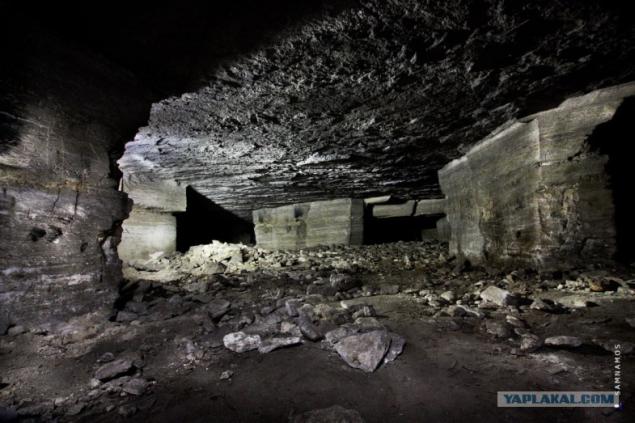
Rostov University student group involved in the work since 1983. At the head of his students - the future journalist VK Scherbanov.V 1987 searchers dug quarries safe with documents. Then we found out the names of 120 more soldiers of underground garrison. To date, the official historians know 323 name. Search engines called another number - 1200 Total until 1987 was conducted 13 expeditions.
37. Very often there are various patriotic inscriptions inflicted during the war.
"Liberating the Crimea!»
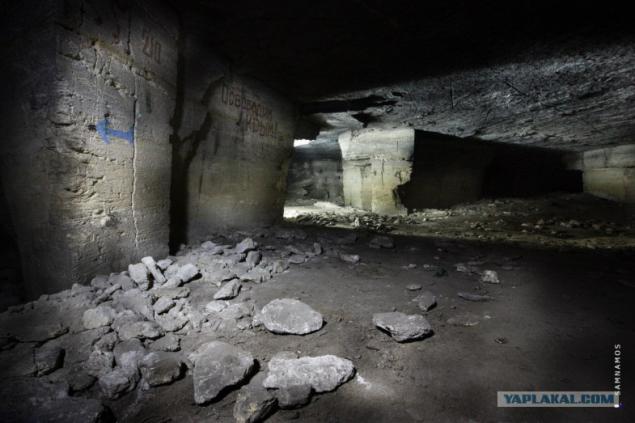
38. Death to the German invaders!

39.
Posted in [mergetime] 1312491926 [/ mergetime]
During a walk through the system meet the locals, conducting tours of the informal part of the catacombs. It describes very interesting. If you decide to visit the catacombs Adzhimushkayskie, not too lazy to walk with a local guide in addition to (rather) tour route. For a nominal fee you Send the Prince and the system will tell a lot of interesting things about the course of battles.
END.
Authorship: samnamos.livejournal.com/3796.html#cutid1
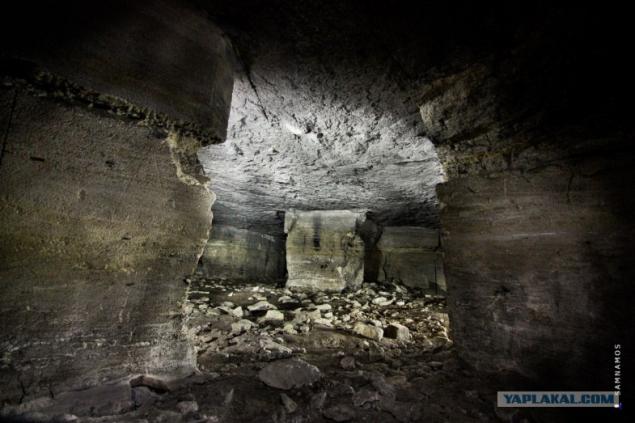
Source:
Under the ancient city of Kerch concealed dozens of huge in its extent podzemnh systems. Among them are the quarry, where for a long time was mostly rock mining for construction purposes, and during the BB serves as a refuge and command center for Crimean fronota. Catacombs are fraught with many unexplored passages. To this day, there is no precise accurate maps of all the workings and adits. The best known system in the area are Adzhimushkayskie quarry. For years, research expedition traveled here with a job search engine. The main difficulty in this case is very yalyaetsya Shatha state of the system, mnogogislennye collapse and debris, as well as the mining of a partial system. To this day, search teams found numerous shells, mines and grenades. Freestyle walking on drifts may be dangerous to the life ...
1. Login to the museum part. Famous Memorable - arhitektunaya compositions of the dead soldiers.

2. A small piece of the exhibition. In general, guided tour is a small segment of the roadway. We are not interested. We are in this review will focus on the informal side of the system. For information on the museum's part can be easily found on the Internet.

3. One of the many craters, formed as a result of aerial bombardment. Over the funnel visible unexploded aerial bomb.

Nemngo history:
May 8, 1942 Nazi troops launched an offensive on the Kerch Peninsula and 16 May seized Kerch. The troops of the Crimean front, defending the city were forced to evacuate to the Taman Peninsula. But part of the troops (the remains of a marine brigade, border guard, Yaroslavl Aviation School, and others - a total of over 10 thousand people), to cover the retreat, and the crossing of the main forces, was cut off and took the defense Adzhimushkay quarries. There's also a part of the local population took refuge.
4. The main entrance to the quarry (on the part of the ravine). Even during production here was accomplished rock loading for transportation.

5. During the war in the roadway were perhaps the fiercest fighting. On the walls can be seen numerous signs to small arms.

6. Fork. On the left the main entrance.

The central leadership of the quarries garrison headed garrison led by PM Yagunov MG and more important.
At first, the Germans could not understand where there are sudden attack of the Red Army. But soon the shelter was discovered, and there were moved additional forces of the Wehrmacht. By continuous attacks, German units of the Red Army was able to drop into the quarry, but further attempts to take quarry assault ended in failure: the detachment Yagunovo bravely repulsed all the attacks of the Germans. Even though the acute shortage of water, food, medicine, ammunition, besieged made daring forays, applied to the enemy strikes, destroying his posts and tanks.
7. The central part of the system is very large. The average ceiling height fluctuates about 3-5 meters.

8. The system consists of several stages. Here, before the collapse, descending to a lower tier.

9. The former burial place P.M.Yagunova.

During one of the raids were captured German ammunition and weapons. During their inspection Yagunov died disarming unexploded grenade. He was the only party to the defense, which was buried in a coffin made of planks of the truck. In 1987, during the search operations tomb was discovered. The remains ceremonially reburied in the central square of the village Adzhimushkay.
10.

11. Here lies a surprising number zakoroneny. Under the layer of landslides still lie the remains of fighters. Somewhere here naholas large mass grave.

12.

The catacombs were not prepared to withstand long siege: there were large stockpiles of food, medicine, weapons and ammunition and water. Each outing was accompanied by a fight. The village had two wells Adzhimushkay - "sweet" and "salty". The Germans, realizing in these sorties of the problems with the water eliminated in the area of the quarry pits and covered them. But the troops did not surrender. He was ordered to dig wells to one of the narrow gangway of rigor nastrogo classify information about his whereabouts. It was impossible to prevent the leakage of information.
13.

14.

15.

Later occupants learned about digging drift. The situation was critical. To get a little bit of water, soldiers licking moisture from the ceiling, and spat into the container ...
Sorely lacking weapons and food, and that Mizera water produced in this way, barely enough to sustain life. By this time the Germans began using poison gas.
16. On the left a huge crater is visible from the charge. The Germans had a rough idea of the location I strategic moves and trying to undermine them.

17.

18. As in almost every major system on the walls indicated pickets (right) for oreintirovaniya.

30 October 1942 42nd Germans surviving soldiers of the garrison were finally captured in a state of complete exhaustion. Of the approximately 13,000 people who descended into the catacombs after the 170-day siege survived only 48, who had been taken hostage. But the quarry and later became the base for the guerrillas of the local residents and prisoners of war.
19. During the whole system is present smell of decay and rot. Stumble here on the hill of bones is very simple.

20.

21.

The heroic defense of Adzhimushkay quarries distract the considerable enemy forces. In November 1943, the area of quarries Adzhimushkay was liberated parts of the 56th Army
22.

23. The remains of an unknown animal. It is believed that this cat

24.

For a long time no one dared to carry out research and study of the battle zone. The catacombs are visited mostly by local for profit. After many battles here left a lot of weapons and ammunition. Search works in the catacombs started provodditsya only 60th. It was set up a branch in the Kerch Historical Archives Museum, dedicated to the 25 th anniversary of the Defense Adzhimushkaya.
25.

26.

27.

In 1972 in the catacombs starts the first complex expedition, consisting of the Crimean speleologists, sappers, signalmen and enthusiasts from Kerch). The purpose of the expedition - found staff documents troops, documents of the Party organization of the underground garrison. The expedition was "Speleological, the highest category of difficulty, work under ground 4-5th category (numerous landslides, debris), with explosive articles in a coal mine lighting ...". Among the finds were even 152- and 122-mm shells, mines, grenades and literally hundreds of unexploded 45mm shells. Results of the first expedition were very modest.
28.

29.

30

In the summer of 1973 he worked as the largest mission, including military historian V. Abramov. Most of the work carried out by SS veterans Defense Shaidurov of Ordzhonikidze and bakinets FF treasurer. With them it was precisely defined central tunnel Large quarries - the main landmark of all areas of defense. Treasurers have, where the main transceiver. Altogether the expedition - about 150 items found. But one of the most significant finds of the 2nd season were 2 polusgorevshie flue gas bombs and broke into fragments walled enclosure or chemical smoke grenades. Analysis of the substance of checkers was is hindered (last 30 years). But the expedition assumed (and with it, many experts agree) that the Nazis used suffocating OB, blowing them with smoke, which were made such flue gas bombs.
31. For the partition wall to the left is a museum route.

32. Due to the door that leads into the museum part is very cold air. I have long wondered why. A system of stable temperature of about 18 *, as in the museum at most 8 *. After careful examination of the walls was found vents for air conditioning that worked consistently. Apparently the organizers specially injected air. A curious point: On the surface, near the entrance to the museum even arrange for warm jackets.

33

In 1974, the first detachment arrived Adzhimushkay Urals - the students of the Sverdlovsk Mining Institute, the head of which was the candidate of historical sciences MP Vahrushev.Nachinaya 1975 consolidated working team from the town of Chelyabinsk region (Miass, Zlatoust, Chebarkul), and a detachment from Lipetsk .Entuziasty of Miass squad (1975-1976 years) found two galleries (deadlock, cut deaf rubble), and the headquarters of the 1st Battalion. The main focus during the search was paid to the area of underground wells. He was the last place-based soldiers of the garrison. They could not be far from the water source. And conducted a search in the area of dislocation of the 3rd Battalion in the western part of the quarry.
34. "Abstract column».

35.

36.

Rostov University student group involved in the work since 1983. At the head of his students - the future journalist VK Scherbanov.V 1987 searchers dug quarries safe with documents. Then we found out the names of 120 more soldiers of underground garrison. To date, the official historians know 323 name. Search engines called another number - 1200 Total until 1987 was conducted 13 expeditions.
37. Very often there are various patriotic inscriptions inflicted during the war.
"Liberating the Crimea!»

38. Death to the German invaders!

39.
Posted in [mergetime] 1312491926 [/ mergetime]
During a walk through the system meet the locals, conducting tours of the informal part of the catacombs. It describes very interesting. If you decide to visit the catacombs Adzhimushkayskie, not too lazy to walk with a local guide in addition to (rather) tour route. For a nominal fee you Send the Prince and the system will tell a lot of interesting things about the course of battles.
END.
Authorship: samnamos.livejournal.com/3796.html#cutid1

Source:

